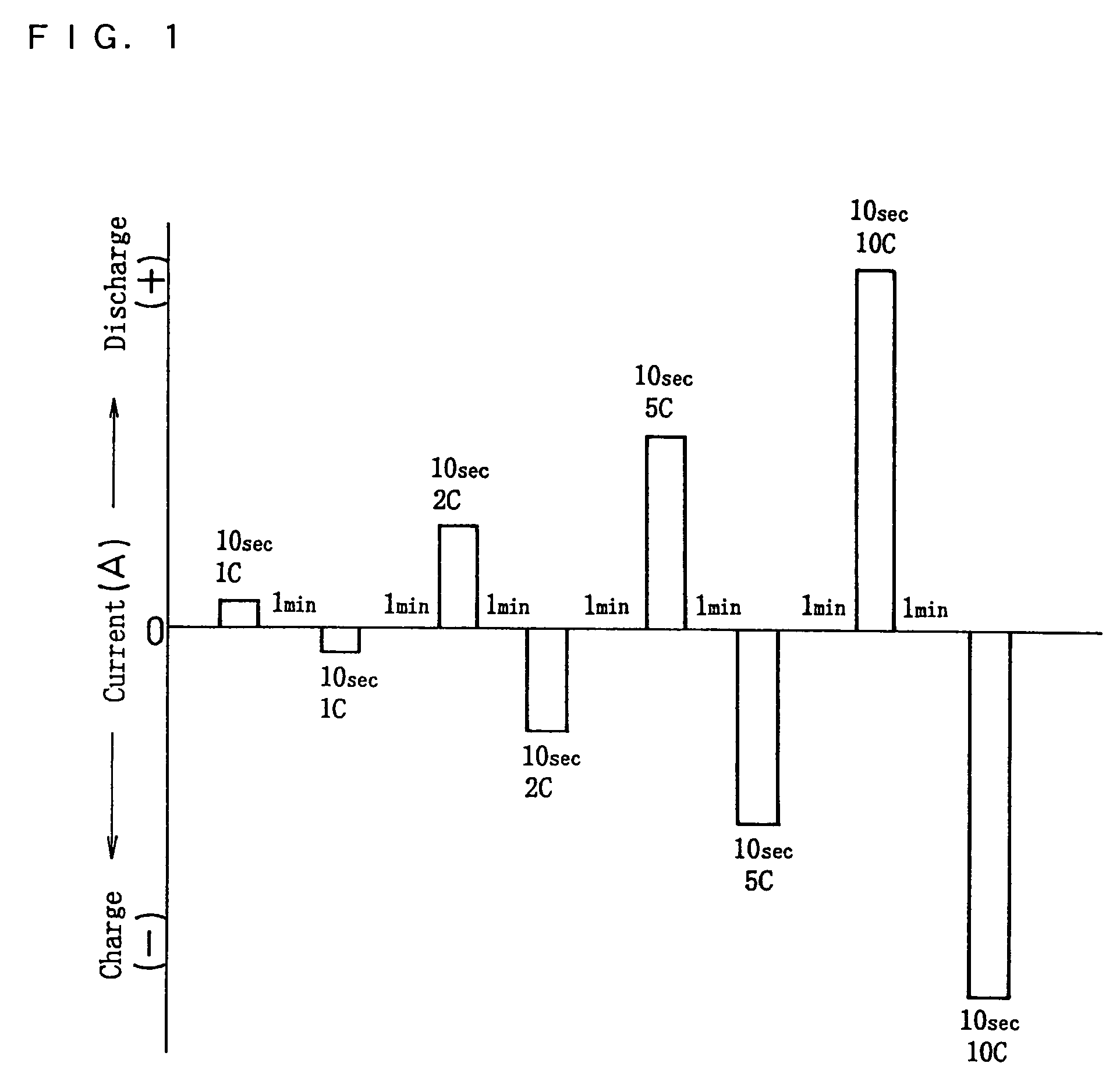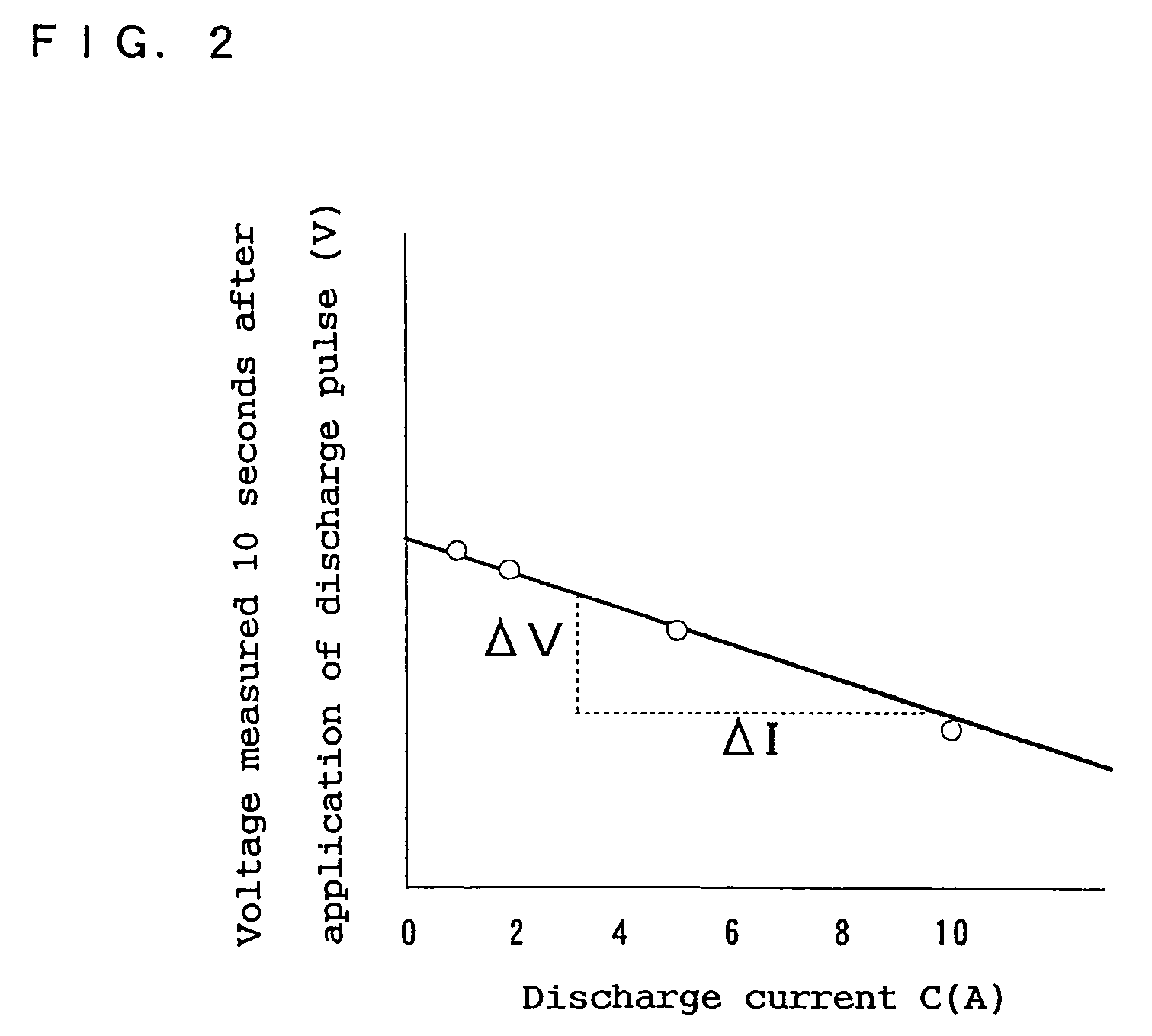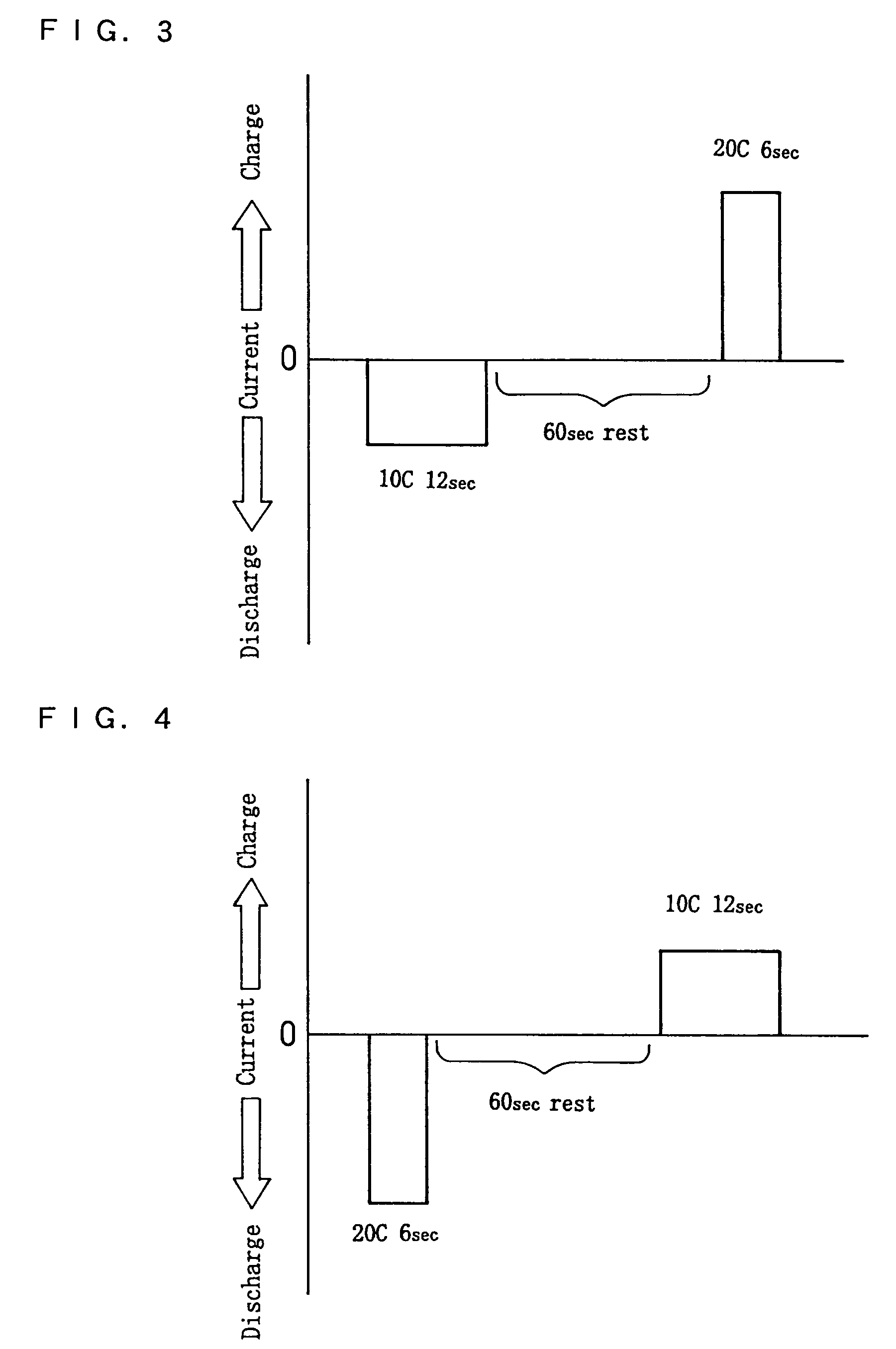High power output non-aqueous electrolyte secondary battery
a non-aqueous electrolyte, secondary battery technology, applied in the direction of cell components, final product manufacturing, sustainable manufacturing/processing, etc., can solve the problems of reduced capacity to charge and discharge, unoptimized combination of positive electrode and negative electrode commonly used in small consumer applications, etc., to achieve high power input/output, increase internal resistance, good balance of long cycle life and high input/output characteristics
- Summary
- Abstract
- Description
- Claims
- Application Information
AI Technical Summary
Benefits of technology
Problems solved by technology
Method used
Image
Examples
example 1
(i) Production of Positive Electrode
[0079]As a positive electrode active material, a lithium nickel composite oxide represented by a composition formula: LiNi0.55Co0.3Al0.15O2 was used. This composite oxide was prepared by the following procedure.
[0080]To an aqueous solution of NiSO4 were added a sulfate salt of Co and a sulfate salt of Al at a predetermined ratio to prepare a saturated aqueous solution. To the solution was slowly added dropwise an aqueous alkaline solution dissolving sodium hydroxide while stirring so as to neutralize the saturated aqueous solution. Thereby, a ternary hydroxide, namely, Ni0.55Co0.3Al0.15(OH)2 was precipitated by coprecipitation method. The obtained precipitate was filtrated and then washed with water, followed by drying at 80° C. The obtained hydroxide had an average particle size of about 10 μm.
[0081]Subsequently, lithium hydroxide monohydrate was added to the resulting hydroxide such that the total atomic number of Ni, Co and Al was equal to the ...
example 2
[0136]As a positive electrode active material, a lithium nickel composite oxide represented by a composition formula: LiNi0.4Co0.3Mn0.3O2 was used. The composite oxide was prepared by the following procedure.
[0137]To an aqueous solution of NiSO4 were added a sulfate salt of Co and a sulfate salt of Mn at a predetermined ratio to prepare a saturated aqueous solution. To the solution was slowly added dropwise an aqueous alkaline solution dissolving sodium hydroxide while stirring so as to neutralize the saturated aqueous solution. Thereby, a ternary hydroxide, namely, Ni0.4Co0.3Mn0.3(OH)2 was produced by coprecipitation method. The obtained precipitate was filtrated and then washed with water, followed by drying at 80° C.
[0138]Subsequently, lithium hydroxide monohydrate was added to the resulting hydroxide such that the total atomic number of Ni, Co and Mn was equal to the atomic number of Li. The obtained mixture was heat-treated at 850° C. in dry air for 10 hours to give LiNi0.4Co0....
example 3
[0149]As the carbon material for negative electrode, 6 different carbon materials having different specific surface areas shown in Table 3 were prepared. These carbon materials were prepared in the same manner as the carbon material used in EXAMPLE 1 was prepared except that boron oxide was used as the graphitization catalyst instead of boric acid, and that the amount of boron oxide was changed in a range of 3 to 10 parts by weight relative to 100 parts by weight of pitch manufactured by Mitsubishi Gas Chemical Company, Inc. (product name: AR24Z, softening point: 293.9° C.). Negative electrodes were produced in the same manner as in EXAMPLE 1 except that the above 6 different graphitizable carbon materials were used.
[0150]Batteries M to R were produced in the same manner as in EXAMPLE 1 except that the above-produced negative electrodes were used. Similar to EXAMPLE 1, the densities of the positive electrode material mixture layer and the negative electrode material mixture layer we...
PUM
| Property | Measurement | Unit |
|---|---|---|
| particle size | aaaaa | aaaaa |
| specific surface area | aaaaa | aaaaa |
| specific surface area | aaaaa | aaaaa |
Abstract
Description
Claims
Application Information
 Login to View More
Login to View More - R&D
- Intellectual Property
- Life Sciences
- Materials
- Tech Scout
- Unparalleled Data Quality
- Higher Quality Content
- 60% Fewer Hallucinations
Browse by: Latest US Patents, China's latest patents, Technical Efficacy Thesaurus, Application Domain, Technology Topic, Popular Technical Reports.
© 2025 PatSnap. All rights reserved.Legal|Privacy policy|Modern Slavery Act Transparency Statement|Sitemap|About US| Contact US: help@patsnap.com



